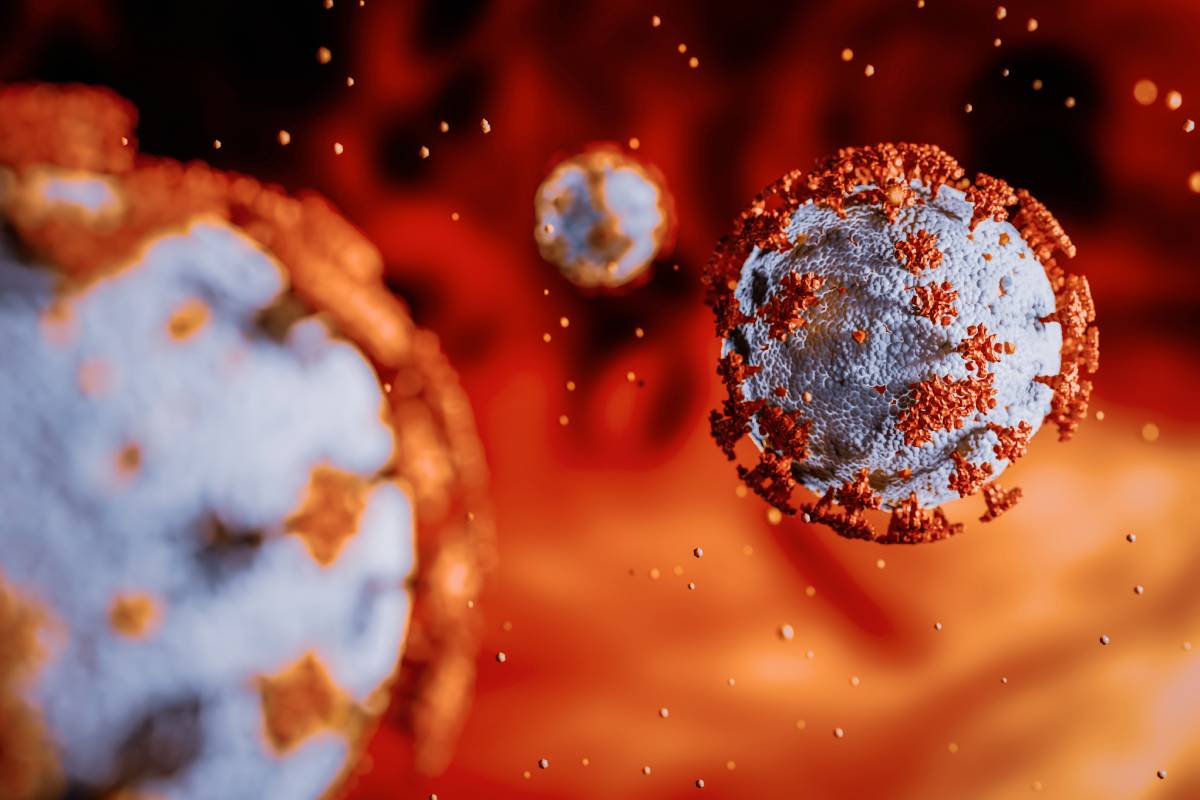The human body is, ultimately, an engine, albeit a large one. To provide energy for cellular processes, the body creates fuel from food, in a process called metabolism. This process is essential, which makes evidence suggesting that COVID-19 can have disruptive metabolic effects all the more concerning.
The body’s main metabolic source is glucose, in the form of blood sugar. The metabolic pathway is not a linear one – high glucose does not necessarily equal high metabolism. The key player in this process is insulin, a molecule allowing glucose to enter cells, where it can then be turned into energy through aerobic or anaerobic respiration. Phase 1 releases stored insulin from the pancreas, and phase 2 relies on the production of new insulin by pancreatic beta cells. Under healthy circumstances, phase 1 insulin allows for the beginning of glycolysis as well as the storage of unused glucose into the liver as glycogen (1). Under hyperglycemic conditions, insulin works overtime to transport glucose, and over time, an insulin resistance may build, a similar process to how addiction creates a neural tolerance. That same insulin resistance may in turn augment the original hyperglycemia, creating an unhealthy feedback loop (1).
The global pandemic has lead to research on a large scale to define the mechanisms behind the virus and the diverse effects of COVID-19 on the body, including possible metabolic effects. In a retrospective cohort study of 7,337 COVID-19 patients, a history of diabetes, when comorbid with hyperglycemia, predicted more severe effects and higher mortality by a factor of 7 (2). Many pharmacological interventions to treat COVID-19 symptomology, such as dexamethasone and other glucocorticoids (3), can induce or otherwise exacerbate hyperglycemic conditions (4). To further understand the metabolic influence of COVID-19, researchers conducted a case-controlled study of 3,854 inpatients, finding patients with hyperglycemia to be 15.6 times more likely to need intubation as a result of the virus, and 3.6 times more likely to succumb to the disease. COVID-19 patients with hyperglycemia were also more likely to develop acute respiratory distress syndrome (ARDS) by more than 9-fold (5).
Researchers have, to date, identified two pathways leading to hyperglycemia – BCF (beta cell dysfunction) and IR (insulin resistance). Reiterer et al. used a molecular assay to measure the levels of plasma C-peptide in hyperglycemic patients with the infection. They found elevated C-peptide/glucose ratios in this subgroup, indicating the mechanism inducing hyperglycemia in COVID-19 patients is IR rather than BCF, information which could prove quite significant for therapies aiming to lower glucose levels (5). Patients with both hyperglycemia and COVID-19 might benefit from insulin sensitivity medication therapy, which works to increase glucose metabolism and spare any unnecessary insulin use, to retroactively lower the built-up resistance.
Additionally, adipose tissue of the endocrine system secretes proteins and cytokines (adipokines), which has been shown to regulate beta cell function as well as modulate insulin sensitivity (6). In turn, adipokine dysfunction is highly associated with metabolic disorders such as obesity, metabolic syndrome, and Type 2 diabetes. A metabolic hormone analysis using Kruskal-Wallis statistical tests revealed significantly lower (p < .01) levels of adiponectin to leptin ratio, where the former is associated with anti-diabetic and anti-inflammatory properties and is thus lower in obese and diabetic patients, and the latter is an adipokine regulator of energy use and appetite. This ratio is a biomarker of metabolic and endocrine health, which prompts a skeptical look at its low levels in glycemic patients with COVID-19 (5).
The metabolic effects of COVID-19 prove to be extensive in their reach, damaging in their effect on molecular functioning, and potentially fatal. Certainly, more research on this subject is warranted to fine-tune our understanding of the mechanisms behind metabolic decline and establish validated therapeutic interventions to target unwanted effects.
References
- Editor. (2019, January 15). Diabetes and Metabolism. Fitness and Exercise. Diabetes. https://www.diabetes.co.uk/diabetes-and-metabolism.html
- Zhu, L., She, Z. G., Cheng, X., Qin, J. J., Zhang, X. J., Cai, J., … & Li, H. (2020). Association of blood glucose control and outcomes in patients with COVID-19 and pre-existing type 2 diabetes. Cell metabolism, 31(6), 1068-1077. https://www.sciencedirect.com/science/article/pii/S1550413120302382
- Group, T. R. C. (2020). Dexamethasone in hospitalized patients with Covid-19—preliminary report. The New England journal of medicine. https://www.ncbi.nlm.nih.gov/pmc/articles/PMC7383595/
- Tamez-Pérez, H. E., Quintanilla-Flores, D. L., Rodríguez-Gutiérrez, R., González-González, J. G., & Tamez-Peña, A. L. (2015). World journal of diabetes, 6(8), 1073. https://www.ncbi.nlm.nih.gov/pmc/articles/PMC4515447/
- Reiterer, M., Rajan, M., Gómez-Banoy, N., Lau, J. D., Gomez-Escobar, L. G., Ma, L., … & Lo, J. C. (2021). Hyperglycemia in acute COVID-19 is characterized by insulin resistance and adipose tissue infectivity by SARS-CoV-2. Cell Metabolism. https://www.cell.com/cell-metabolism/fulltext/S1550-4131(21)00428-9#secsectitle0040
- Gómez-Banoy, N., & Lo, J. C. (2019). Adipokines as key players in β cell function and failure. Clinical Science, 133(22), 2317-2327. https://portlandpress.com/clinsci/article/133/22/2317/221329/Adipokines-as-key-players-in-cell-function-and


